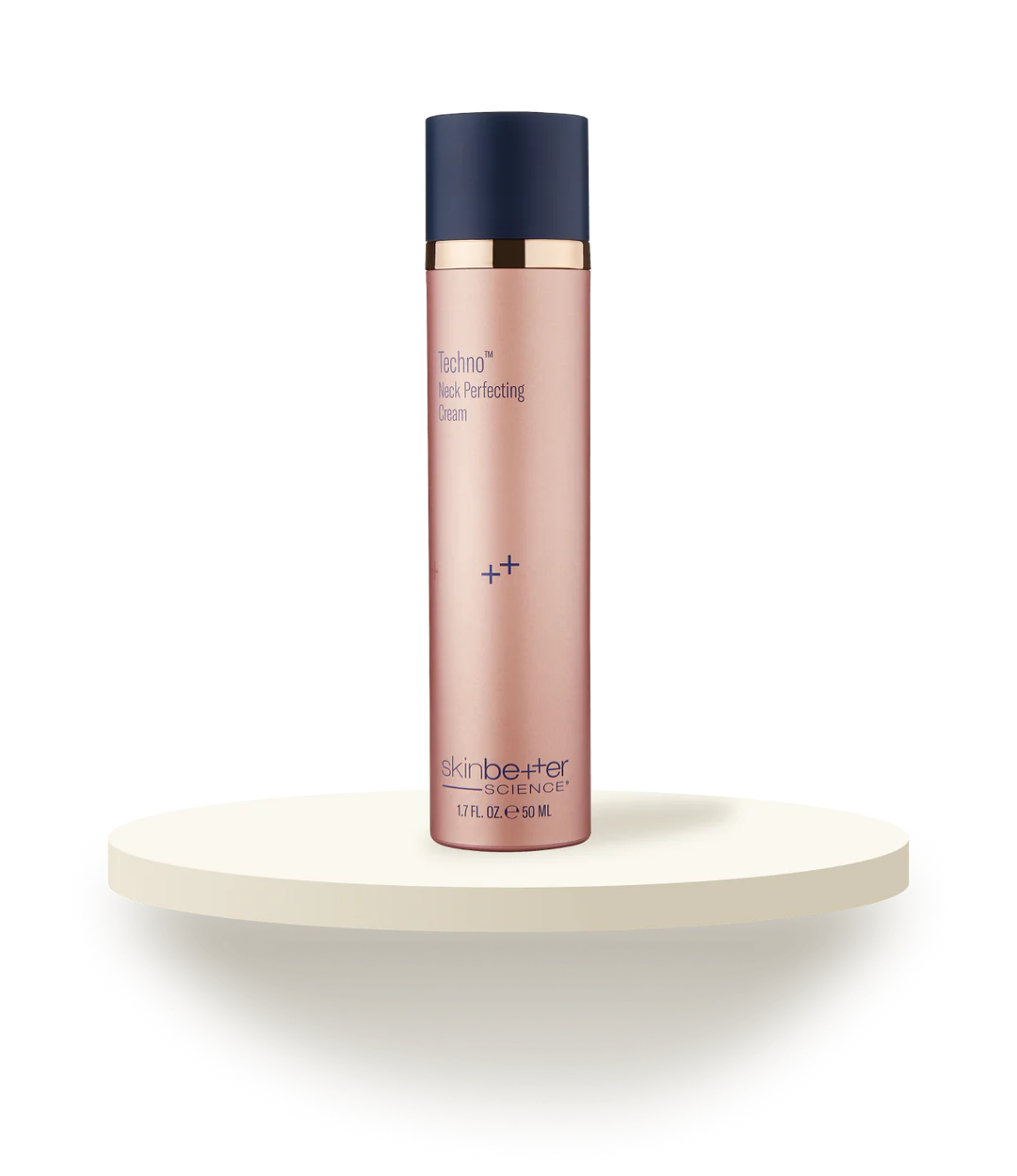Large Pores + Acne
If you have acne often, it is likely that you have large pores. Large skin pores are markers of increased sebaceous gland size and the associated increase in sebum production. People who produce more follicle oil tend to experience acne breakouts more often.
Large pores and acne are inherited in many people. If these traits run in your family, then you may be more likely to have more severe breakouts than others. Having large facial pores doesn’t mean that you are bound to get acne; it just makes it more likely that you will.
Since large pores and acne are commonly seen together, treating one condition successfully may also benefit the other.
Large Pores + Dry and Oily Skin
Some people with large pores are not troubled by acne, but rather, by combination skin that is dry and flaky in some spots and oily and glossy in others.
It is important to differentiate between dry skin and dehydrated skin. Dehydrated skin can be oily, dry, or a combination of both. Being dehydrated simply means that the skin tissue lacks adequate water, not that it is dry in a sense of not producing sebum oil.
It is more likely that dehydrated skin will begin to produce extra sebum to make up for the lack of water moisture it contains. This can cause the dehydrated skin to appear oily in spots, which is why dehydrated and oily skin are often confused.
When dehydrated areas of the face begin producing extra sebum in attempts to lubricate and moisturize the skin, it increases the chances of developing clogged pores. This can make already large pores appear even larger as they expand with oil and other debris.
Large Pores and Blackheads
When a pore gets clogged, sebum has a difficult time traveling to the surface of the skin as it is meant to. If the oil remains trapped beneath the skin by dead skin cells and other waste, it will begin to accumulate beneath the opening of the pore. This happens a lot on and around the nose.
When the debris that is clogging a pore is exposed to gases in the atmosphere, they begin to oxidize, which changes their physical characteristics. This process is what causes blackheads to form. So, it is not necessarily having large pores that cause blackheads, but rather, having clogged pores that are unable to effectively transport sebum oil to the surface of the skin.
Causes of Large Pores
In some cases, large pores are the result of genetics. However, there are other causes too. Other leading causes include:
Sun damage to skin collagen
Excessive production of sebum oil
The aging process as most people lose skin elasticity with age
Treating Large Pores on the Face, Nose, Cheeks, and Forehead
There are various effective treatments and procedures that skin care specialists use to make larger pores less noticeable. Some of the safest and most effective are:
IPL
Facials
Microneedling
Chemical Peels
Laser Resurfacing
IPL (intense pulsed light)
An IPL Photofacial treats multiple layers of the skin with high-intensity, broad-spectrum light rays. It mainly targets the dermis (lower layers of the skin) and not the epidermis (top layers of the skin). This popular medspa treatment tightens visible pores and gives them a fresh, firm, and glowing appearance. Some patients see significant results after a single 5-minute outpatient treatment although a series of treatments are typically needed. Most patients find IPL to be painless. The average cost for a single session is about $500.
Facials
Getting a facial is a pleasant and rewarding experience that can effectively reduce the appearance of large pores. It can also improve the look of acne scars, damage from sunlight, and fine lines and wrinkles. Some other benefits of this skin rejuvenation technique are:
Microneedling
This procedure is noninvasive, using microneedles to improve skin concerns like large pores, fine lines, fine wrinkles, skin laxity, acne scars, and skin tone discoloration. It is sometimes called “percutaneous collagen induction” because it helps to stimulate collagen production.
Chemical Peels
This is a skin resurfacing technique that involves applying a chemical solution that exfoliates the skin. Chemical peels range from light to deep and can be quite effective for improving the appearance of large facial and nose pores. The most common chemicals used for this are:
BHAs (beta-hydroxy acids like salicylic acid)
AHAs (alpha-hydroxy acids)
TCA trichloroacetic acid)
Phenol
Laser Resurfacing
Although laser skin resurfacing is more commonly recommended for reducing acne scars, wrinkles, and facial blemishes, it can also be very helpful for tightening pores and enhancing the appearance of the skin. Laser treatments are precise, safe options for removing the top layers of the skin to expose new, healthy skin beneath.
Home Remedies and Skincare Products
There are numerous skin care products available that can help to reduce the appearance of large skin pores. Cleanse and exfoliate your face and nose regularly. This will keep oil, bacteria, dirt, sweat, and other pore-clogging substances from accumulating. Using skincare with ingredients that exfoliate or increase cell turnover, like hydroxy acids, retinol, and retinoids, can help improve the texture of the skin.
Preventing Large Pores
Some people are born with large pores. While there’s nothing you can do change your genetic code, there are various ways to avoid clogging the pores and making them appear even larger. Consider the following tips from the American Academy of Dermatology:
Choose non-comedogenic (non-clogging) skin care and cosmetic products
Avoid harsh astringents as they can cause increased sebum production
Gently cleanse your face twice daily with warm (not hot) water
Avoid thick, greasy moisturizers that can clog the pores
Drink plenty of pure water every day
Remove makeup at night
Avoid bar soaps

